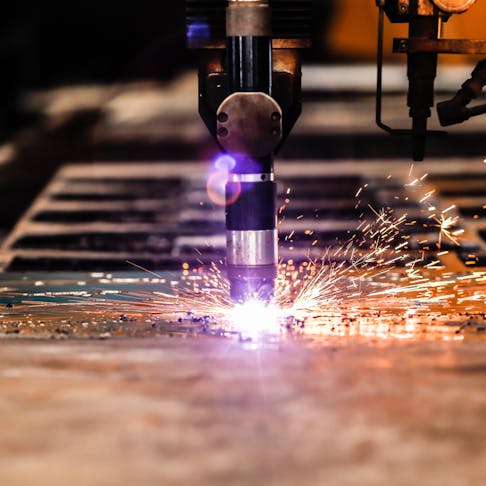
Plasma Cutting Calculator: Significance, Factors Affecting Cost, and Benefits

Plasma cutting is a widely used technique in precision cutting operations, and accurate cost estimation is crucial for successful project planning and budget control. This is where plasma cutting calculators come into play. These specialized tools assist manufacturers in determining the actual costs associated with plasma cutting projects, enabling cost optimization and informed decision-making. Plasma cutting calculators offer numerous benefits to manufacturers involved in precision cutting operations. By utilizing these calculators, businesses can accurately estimate the costs of plasma cutting processes, allowing them to plan their budgets effectively. The calculators consider various factors such as material usage, cutting speed, power settings, and consumables, providing a comprehensive cost analysis.
Plasma Cutting Cost Calculator
Factors Affecting Plasma Cutting Costs
Several key factors significantly influence plasma cutting costs. Understanding these factors is essential for accurate cost calculations and cost optimization.
Material Selection
The choice of materials plays a critical role in plasma cutting costs. Different metal types and alloys have varying costs and cutting characteristics. Some metals may require specialized settings or consumables, which can impact the overall expenses of the cutting project.
Material Thickness
Metal thickness directly affects plasma cutting costs. Thicker metals may require longer piercing times, impact cut quality, and increase consumable wear. Therefore, the thickness of the metal being plasma cut is a crucial consideration in cost estimation.
Cutting Speed
The plasma cutter speed has a significant impact on plasma cutting costs. Faster cutting speeds generally increase production efficiency but may also affect the cut quality and consumable life. Finding the optimal cutting speed is essential to balance cost and productivity.
Power Settings
The power settings used during plasma cutting operations also influence costs. Different power levels affect the stability of the arc, cut quality, and consumable life. Manufacturers can achieve desired results by selecting the appropriate power settings while optimizing costs.
Consumables
Consumables, including electrodes, nozzles, and shields, are vital in plasma cutting costs. These consumables' cost and replacement frequency directly affect the overall expenses. Efficient consumable usage and replacement strategies can help control costs.
How Plasma Cutting Calculators Work
Plasma cutting calculators utilize sophisticated cost calculation algorithms to provide accurate estimations. These calculators require specific inputs related to the cutting project, including material type, thickness, cutting speed, power settings, and consumable details. The calculators generate detailed outputs by analyzing these inputs, including cost estimates and project specifications. The accuracy and reliability of plasma cutting calculators make them invaluable tools for manufacturers. They enable businesses to make informed decisions based on precise cost estimations, supporting budget planning, and project feasibility assessments.
Benefits of Using a Plasma Cutting Calculator
Utilizing a plasma cutting calculator offers numerous benefits to manufacturers engaged in precision cutting operations. Some key advantages include:
Cost Optimization: Plasma cutting calculators assist in optimizing costs by providing accurate estimations, enabling manufacturers to identify cost-saving opportunities and make informed decisions.
- Budget Control: With precise cost estimations, businesses can effectively plan and control their budgets, ensuring financial stability throughout the plasma cutting projects.
- Project Planning: Plasma cutting calculators aid in project planning by providing insights into the cost implications of different variables. Manufacturers can assess the feasibility of projects and make adjustments as needed.
- Precision Cutting: By utilizing a plasma cutting calculator, manufacturers can achieve precision cutting while considering cost factors. This ensures high-quality results while optimizing expenses.
Summary
This article presented plasma cutting calculators, explained them, and discussed the factors that affect costs for projects. To learn more about plasma cutting, contact a Xometry representative.
Xometry provides a wide range of manufacturing capabilities, including sheet cutting and other value-added services for all of your prototyping and production needs. Visit our website to learn more or to request a free, no-obligation quote.
Disclaimer
The content appearing on this webpage is for informational purposes only. Xometry makes no representation or warranty of any kind, be it expressed or implied, as to the accuracy, completeness, or validity of the information. Any performance parameters, geometric tolerances, specific design features, quality and types of materials, or processes should not be inferred to represent what will be delivered by third-party suppliers or manufacturers through Xometry’s network. Buyers seeking quotes for parts are responsible for defining the specific requirements for those parts. Please refer to our terms and conditions for more information.
